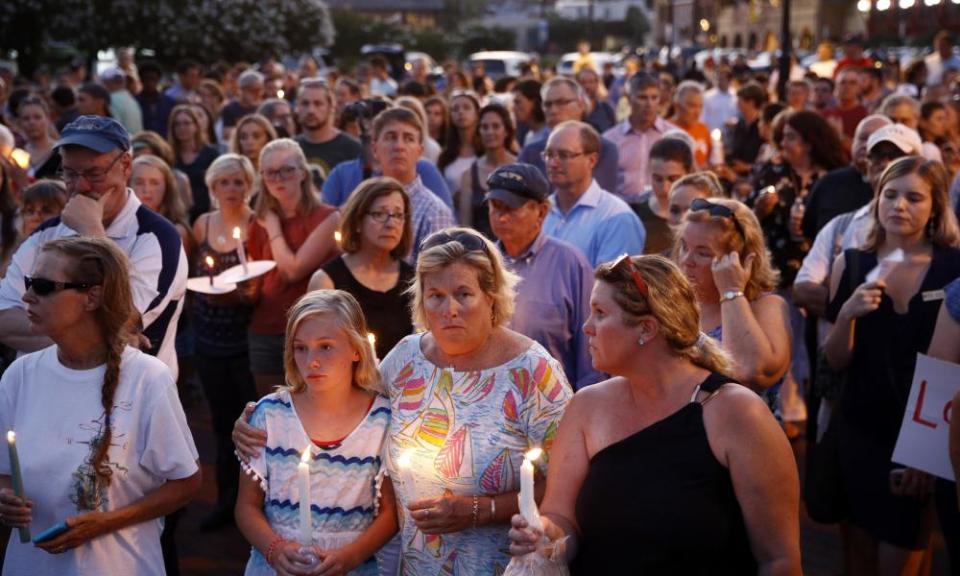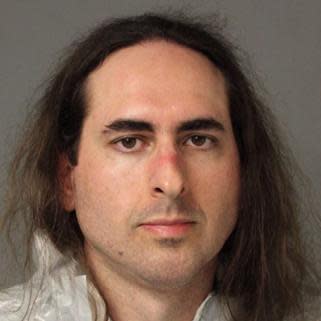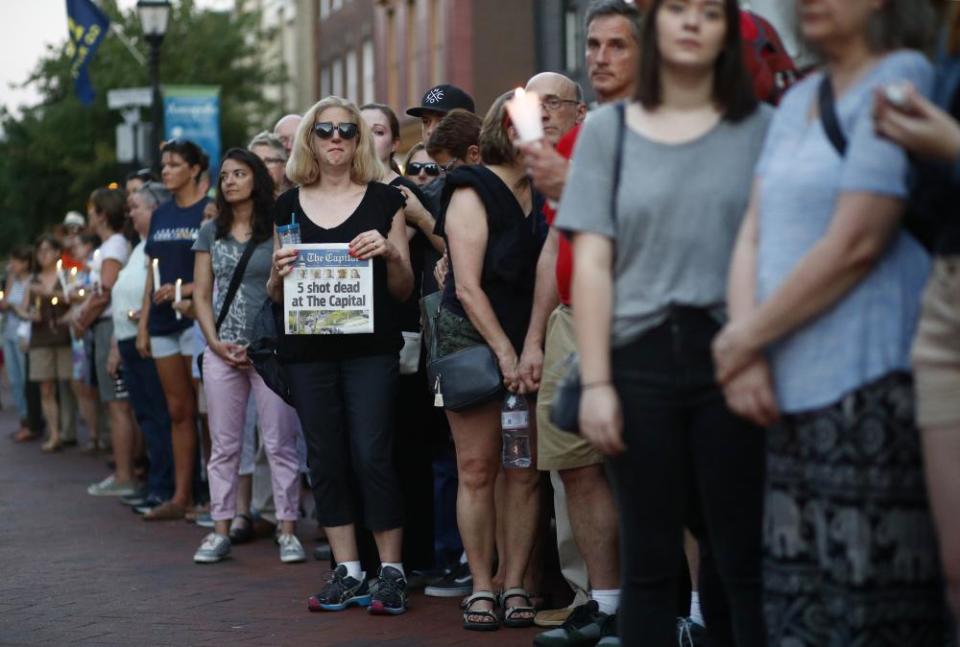Capital Gazette: US mass shooters and their history of violence towards women
Female classmate says gunman harassed her, matching pattern of attackers perpetrating violence against those close to them

A 38-year-old gunman shot through a sleepy newsroom’s glass door and kept unloading. He killed five people – four journalists and an advertising saleswoman. Two more were injured, and many more will be mentally scarred.
This week’s attack on the newspaper, the Capital Gazette, comes at a time when threats against American journalists are rising. But threats, harassment and stalking behavior from the shooter, Jarrod Ramos, started years before – with a female high school classmate.
The Maryland woman told the Capital Gazette in 2011 that she had answered Ramos’s messages, just “being friendly”, but soon realized the situation was “turning into something that gave me a bad feeling in the pit of my stomach”.
“He seems to think there’s some sort of relationship here that does not exist,” she told the paper. “I tried to slowly back away from it, and he just started getting angry and vulgar to the point I had to tell him to stop.” He harassed her for more than a year.
According to research from the gun control group Everytown for Gun Safety, FBI data on mass shootings from 2009 to 2016 showed that in 54% of the cases, the attacker killed an intimate partner, like a spouse or former spouse, or another family member, in the violence.

Examples are easy to find. The Sandy Hook shooter, who killed 26 people at the Connecticut elementary school, also killed his mother. A Texas man targeted his in-law’s church, where he killed 26 people and wounded 20 more. Another Texas man killed his estranged wife and seven other people at a party.
Other mass shooters don’t meet this strict definition – killing an intimate partner in an act of mass violence – but still appear to have previously had deeply problematic or abusive relationships with women.
Like the Capital Gazette shooter, who harassed a female classmate he had not seen in years, the Virginia Tech shooter who killed 32 people also allegedly stalked two female classmates. The Pulse nightclub shooter allegedly beat, raped and controlled his wife, though she was not harmed the night he killed 49 people. The shooter who targeted a Parkland, Florida, high school allegedly abused his ex-girlfriend, before he killed 17 people.
It’s infuriating, as a survivor of this kind of violence to have to see this happen time and time again
Kate Ranta
For Kate Ranta, who was stalked and harassed by her ex-husband for years, the signs are all too real.
Her ex-husband was, “vandalizing my car, breaking into my home, showing all types of escalating behaviors, but I could never do anything about it.” When, on one November day in 2012, she called police to report her car tire was slashed, she told them: “He’s going to have to kill me before you people do anything about it.”
“Twenty minutes later he came shooting,” Ranta said.

She and her father were each shot twice. Her son, who was four-years-old at the time, nearly watched her die. She has since physically recovered, and her ex-husband was sentenced to 60 years in prison for attempted murder. However, she now suffers from post-traumatic stress disorder, has a bullet wound scar above her left breast, and lost a knuckle when she was shot through the hand.
“These guys get like a slap on the wrist and get pleaded down to a misdemeanor,” Ranta said. “It’s infuriating, as a survivor of this kind of violence to have to see this happen time and time again.”
Two newly passed laws in Maryland, still yet to go into effect, may have made it more difficult for the Capital Gazette shooter to obtain a weapon. One law, called a “red flag” law, may have allowed law enforcement or a family member to petition a court to temporarily restrict a person’s access to guns if they felt that person was a threat to themselves or others.
However, a criminal background check is only required in Maryland for handguns. That requirement does not extend to “long guns”, such as the shotgun the shooter used. Further, because the shooter was only convicted of misdemeanor harassment – a crime not related to domestic violence – it is unlikely he would have been prohibited from owning a gun.
“They talk a lot about taking firearms away from mentally ill, and really evidence shows mentally ill aren’t more violent than others,” said Lawrence Gostin, a law professor at Georgetown University and an expert in domestic violence. “It tends to be a red herring.”
“But what is not a red herring, is individuals who have engaged in stalking behavior, or actual violence, or threatening behavior,” he said. “That is the single best predictor of future violence, and women in particular are scared by it.”

